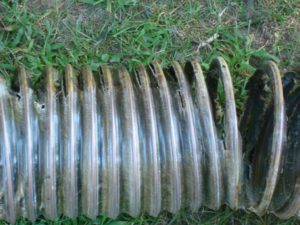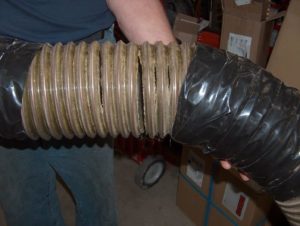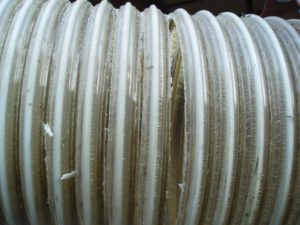Examples of Failed Hoses
Ether vs. Ester (what’s the difference?)
The above degradation is the result of moisture, warmth, and biological activity (microbes, bacteria). The Ester component in the polymer chain is hydrolyzed (broken down) by warmth and moisture, and is further attacked by common bacteria found in nature. This is a problem in the grain belt, as well as in the Eastern part of the US.
We have seen this many, many times, and have replaced plenty of hoses with the exact same symptoms. Note the linear cracking, and the “stringy”, crystallized appearance of the Urethane material. This is the telltale sign of hydrolysis damage to an Ester-based hose.
The moral to the story is, don’t use Ester-based hose for lawn and leaf work. Only Ether-based urethane should be used. Ether-based Urethane is immune to the effects of moisture, warmth, and biological activity. All of Wynn Environmental’s lawn and leaf Urethane Hose is Ether-based, and does not have this problem.



